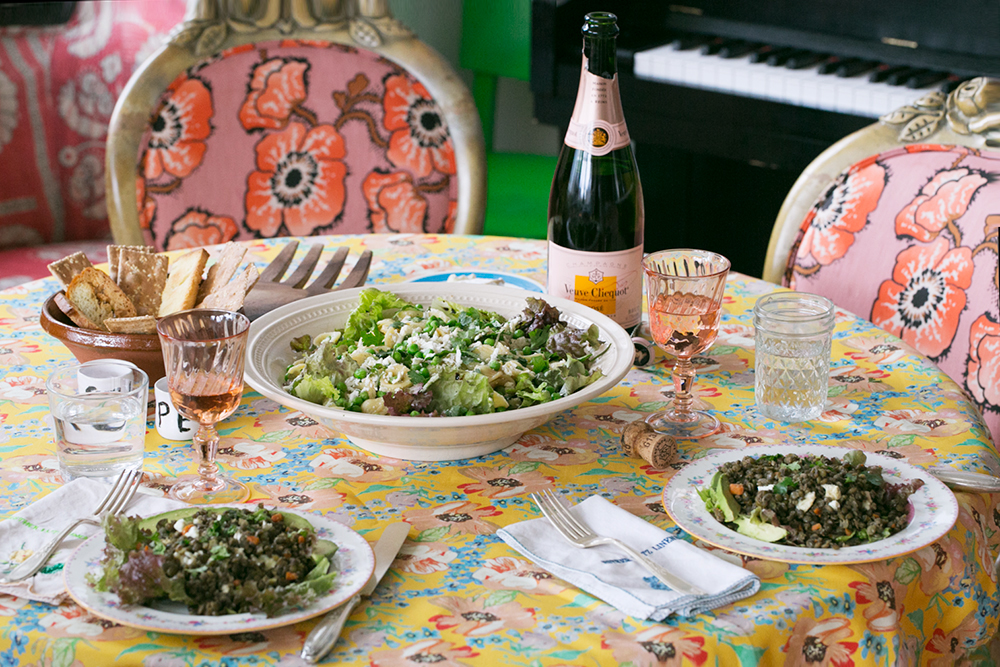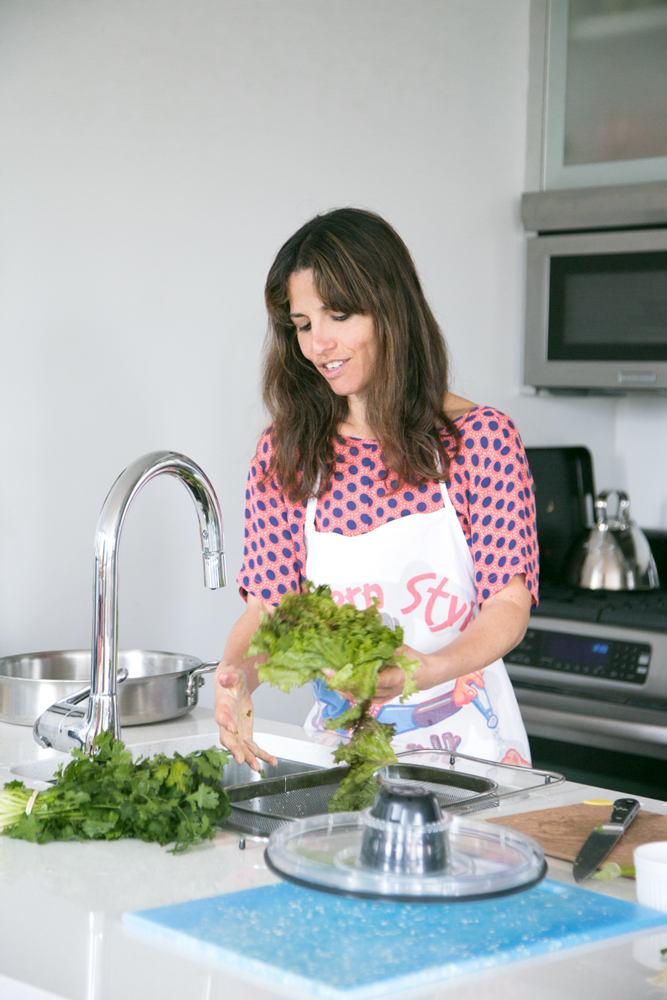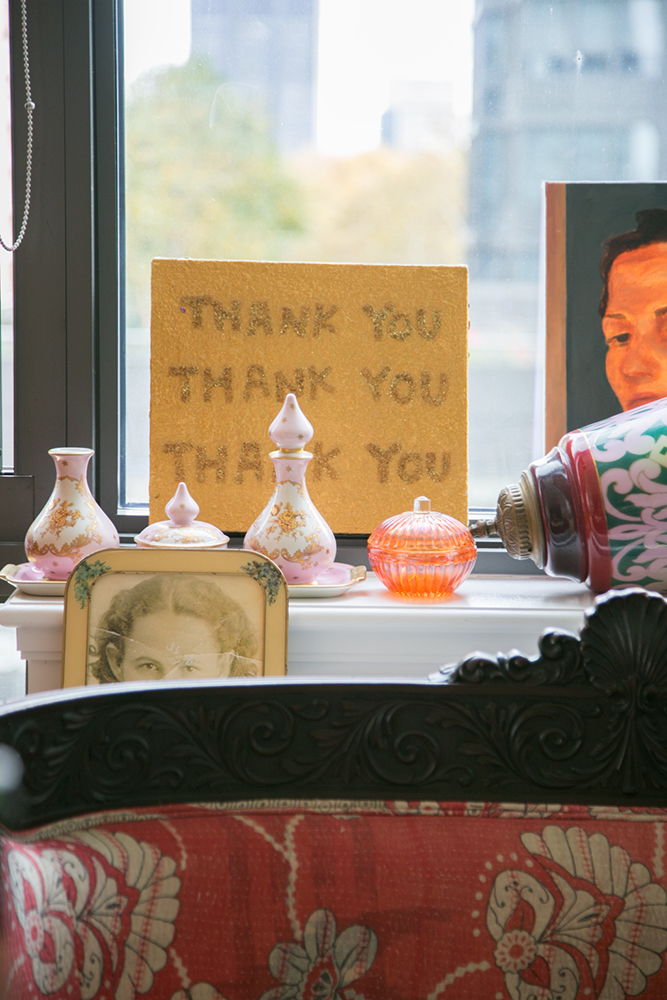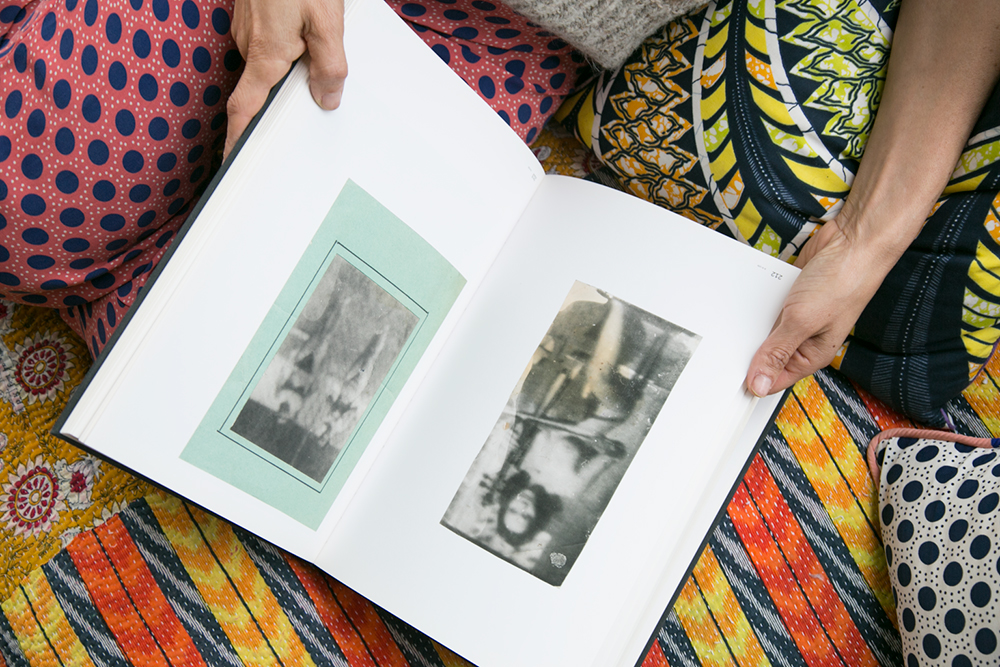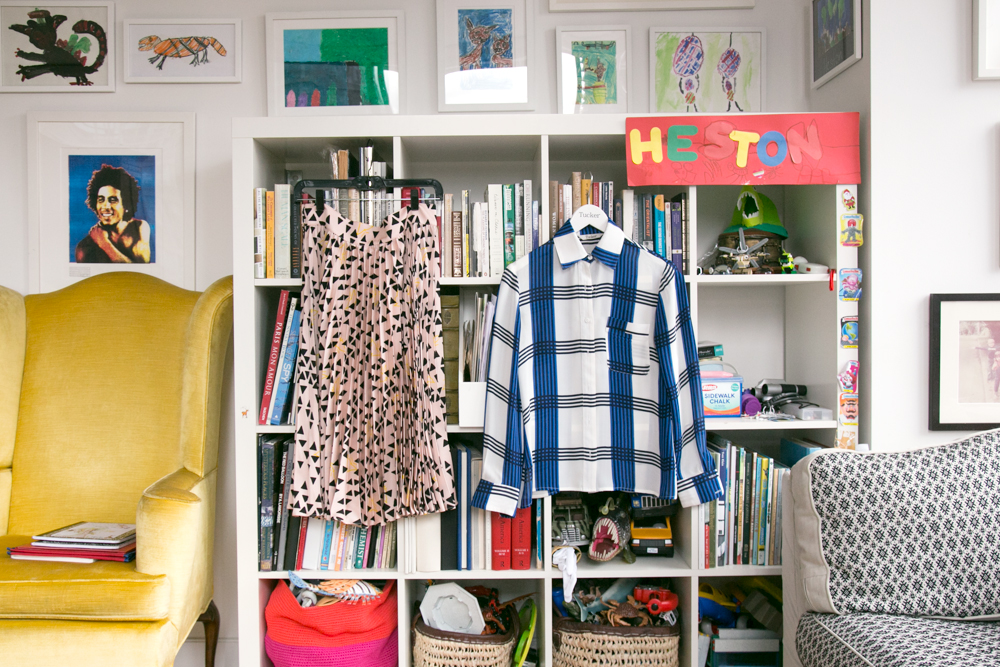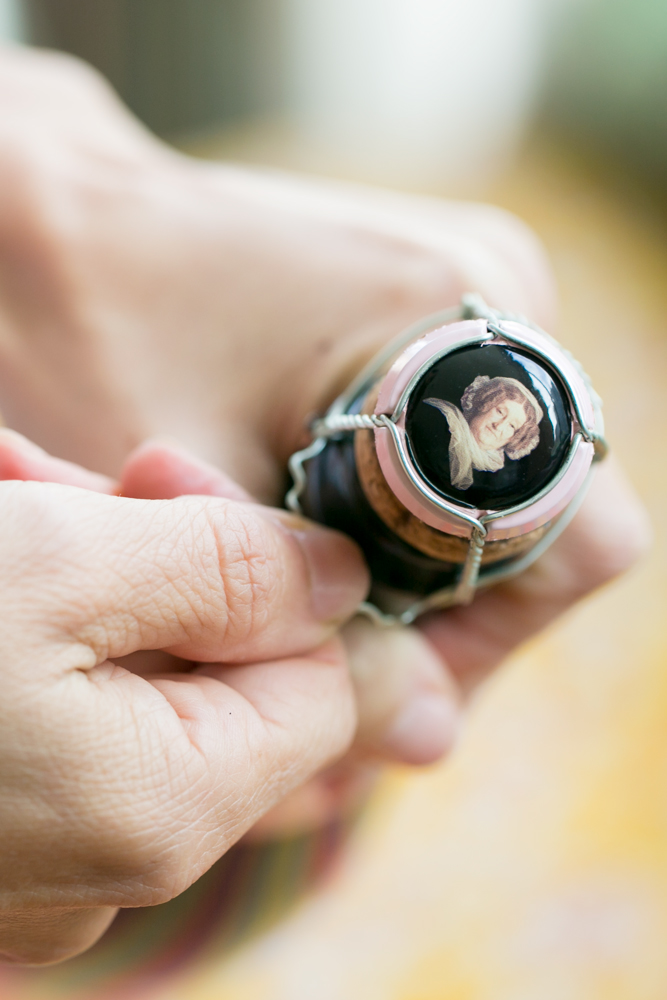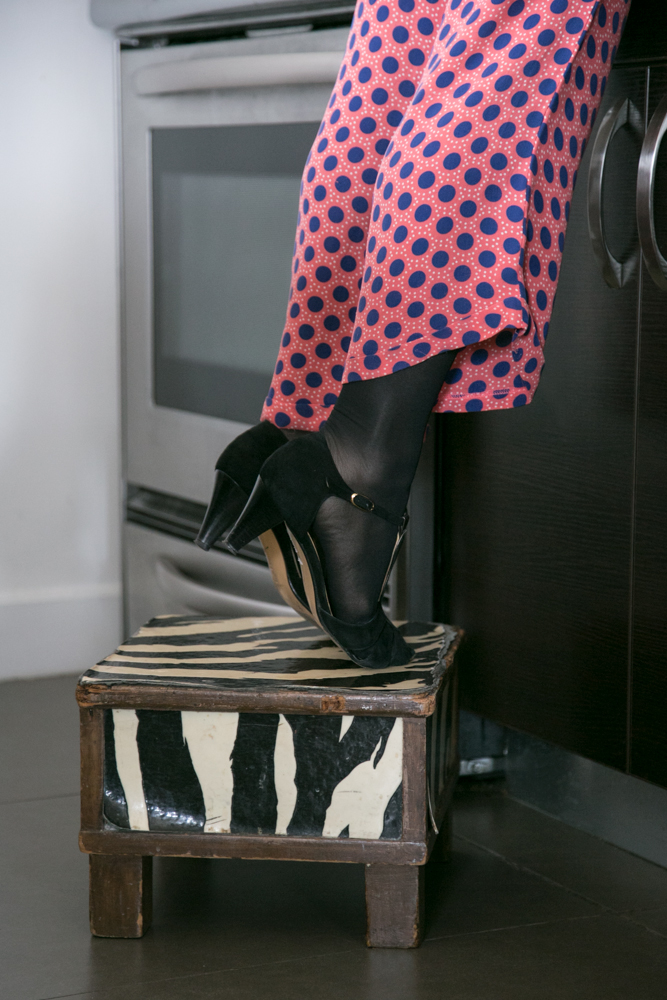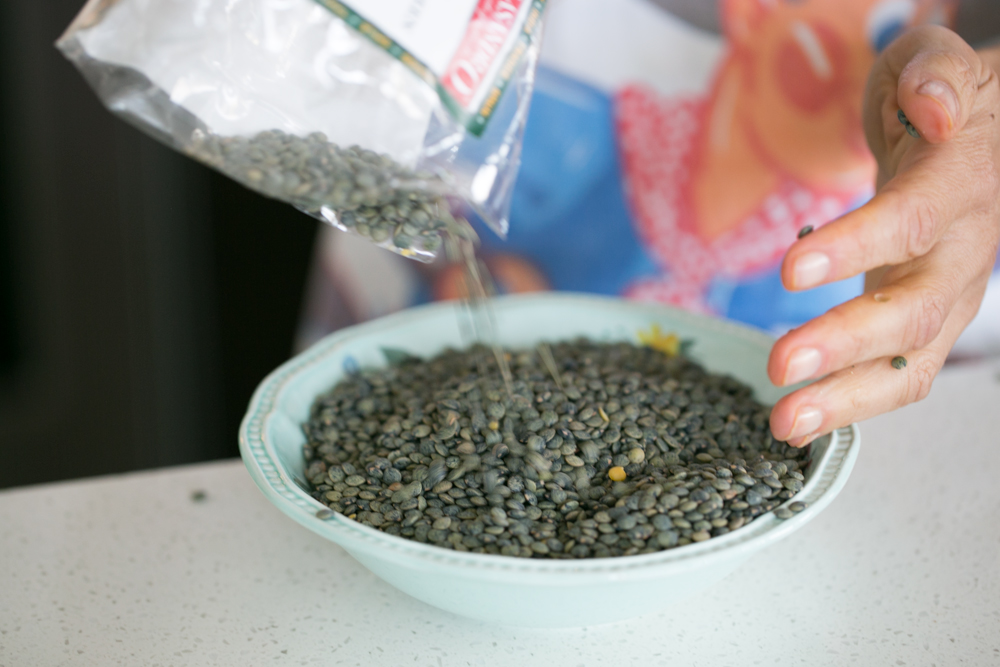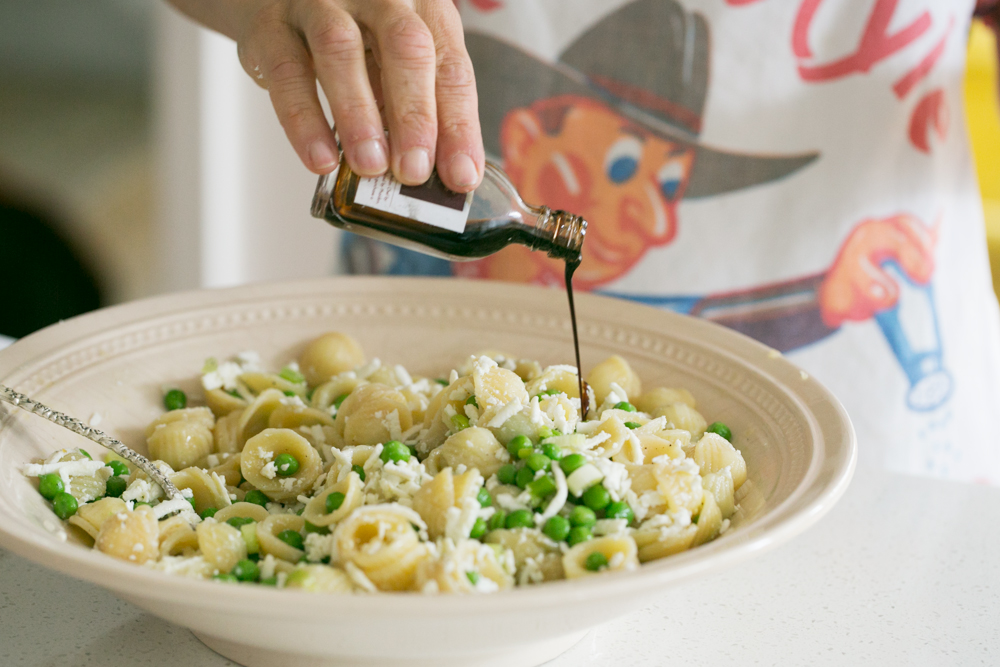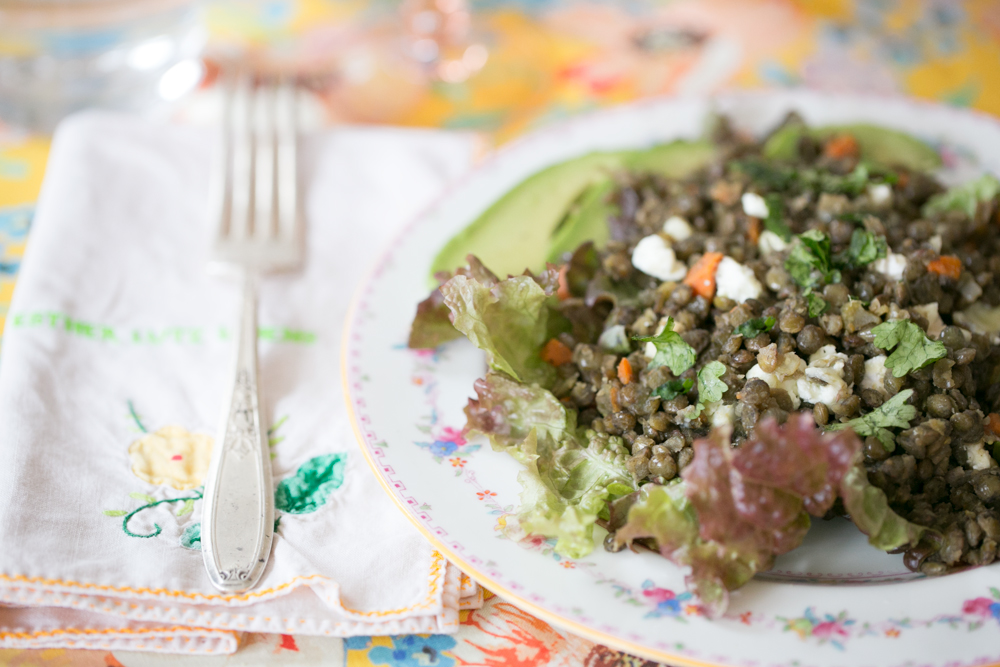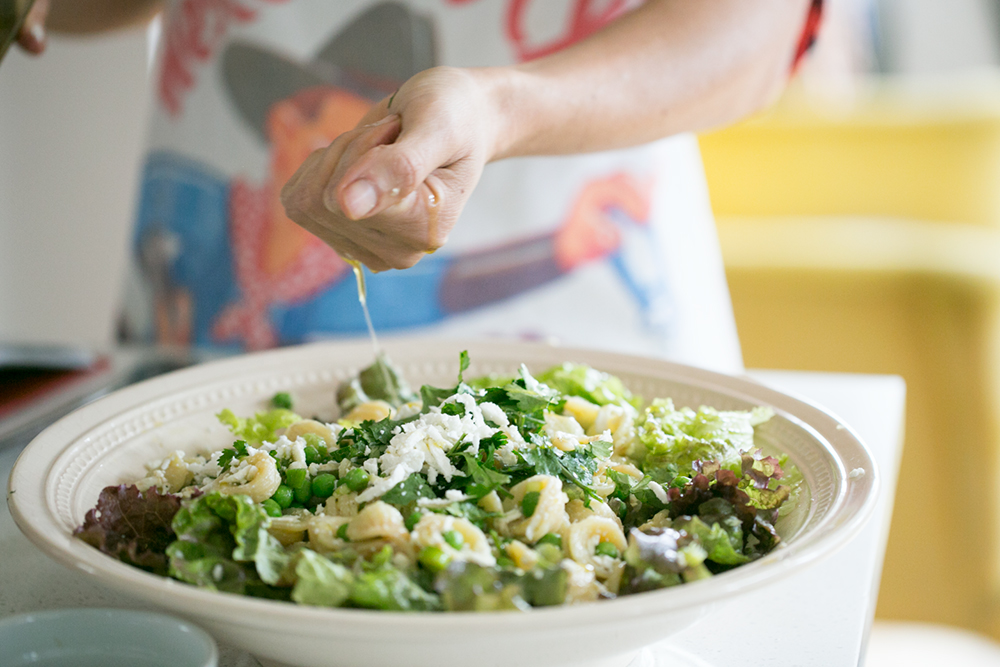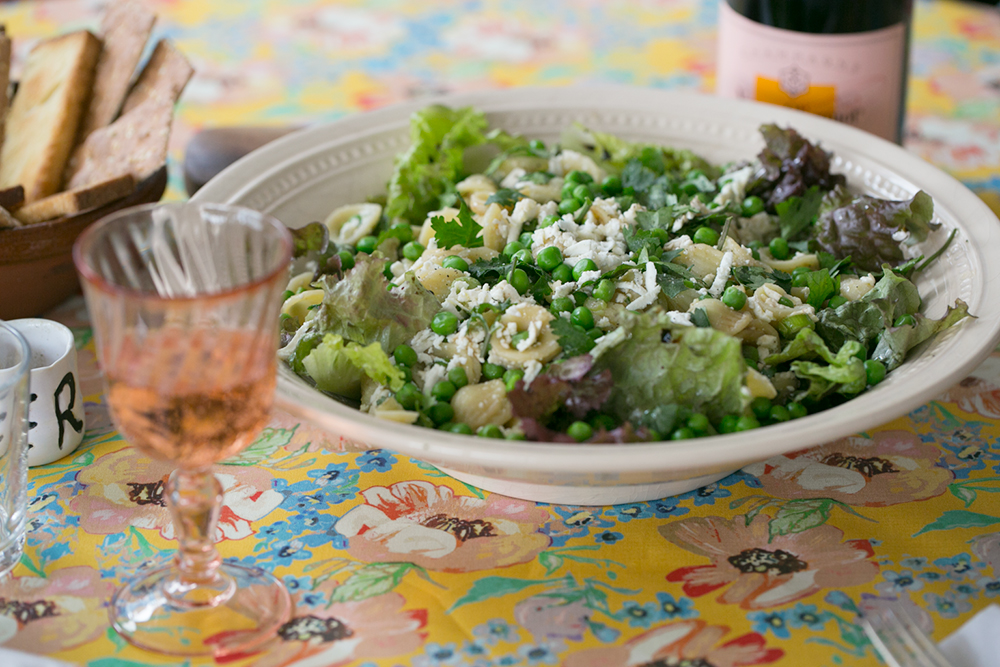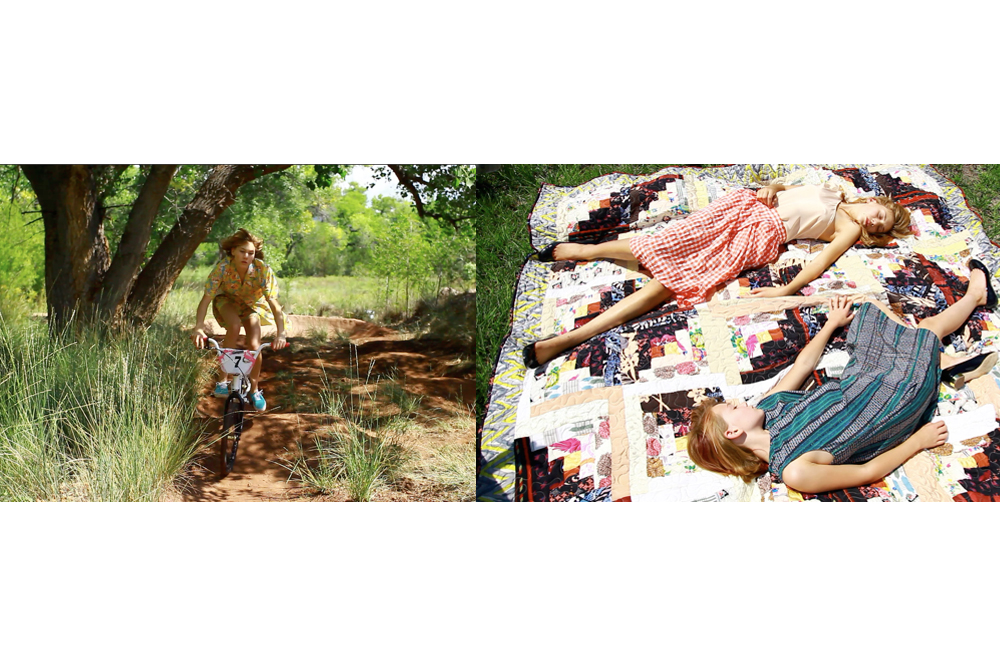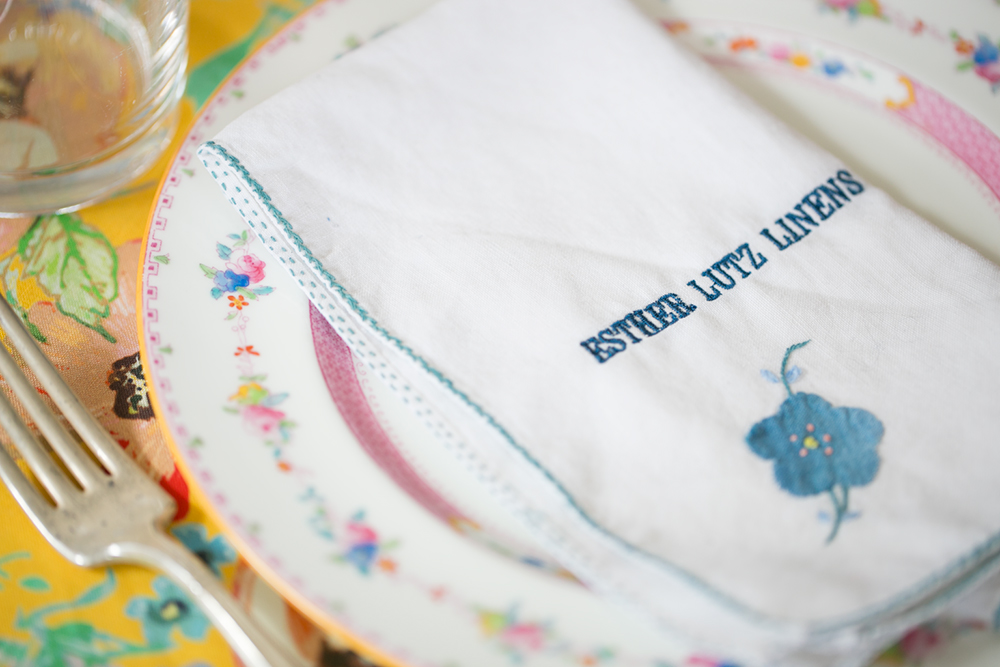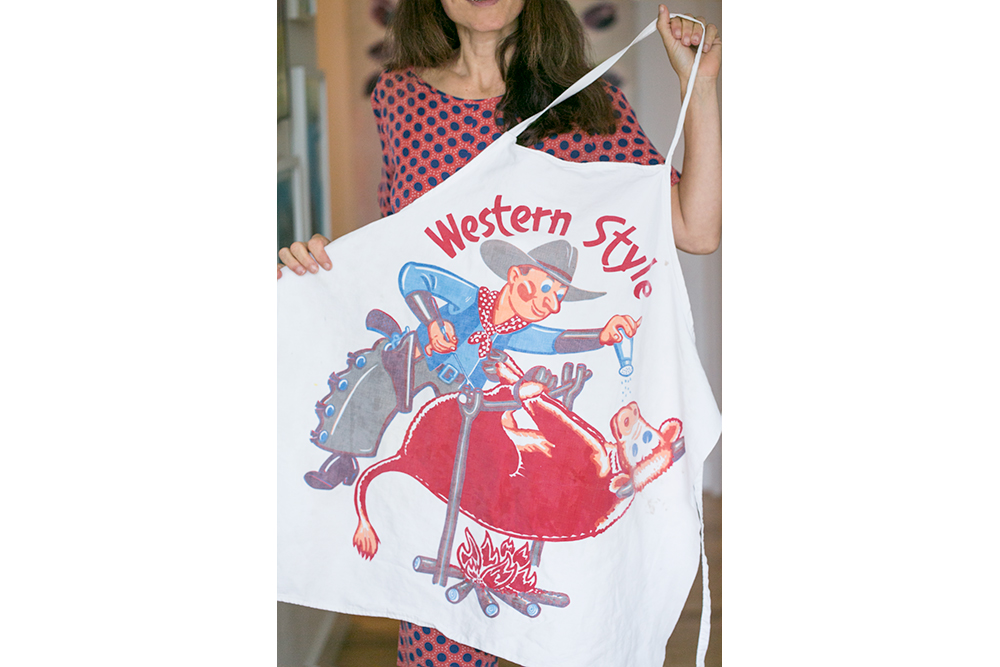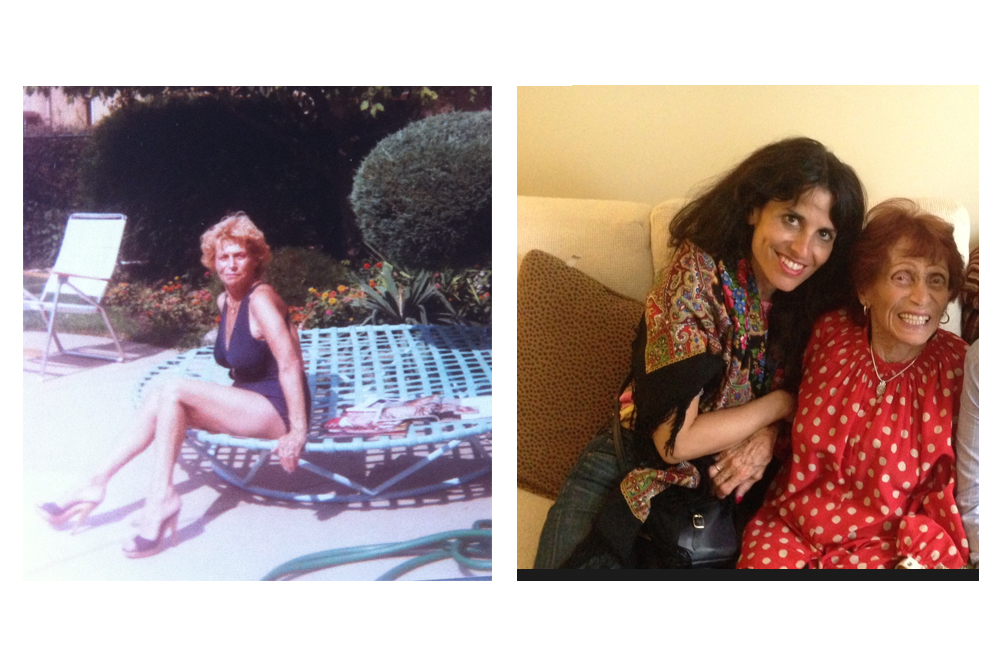Orcchiette with Peas, Ricotta Salata and Parsley
Gaby Basora’s Orecchiette Salad
POSTED UNDER
- Entree Salad,
- Fall
INGREDIENTS
- CARROTS,
- chevre,
- lentils,
- lettuce,
- orecchiette,
- parsley,
- pasta,
- peas,
- ricotta salata
NOTES
The pasta salad recipe is adapted from the book, Salad For Dinner, and the lentil salad comes from Peter Miller’s cookbook, Lunch at the Shop: The Art and Practice of the Midday Meal. Either one alone would make a hearty meal, together, they are a feast. If you don’t have the Massimo Botturo dark cherry balsamic vinegar found in the orcchiette, make sure to substitute a balsamic reduction or syrupy balsamic vinegar.
RECIPE
DIFFICULTY
HARD
SERVES
4
PREP TIME
20 MINS
Orecchiette Salad
-
10ozfresh or frozen English peas
-
6ozsnow peas or sugar snap peas
-
6ozorecchiette pasta
-
4tbsextra virgin olive oil, divided
-
3tbsMassimo Botturo dark cherry balsamic vinegar
-
1tbsminced green garlic
-
8ozricotta salata
-
2green onions, thinly sliced
-
2tbsminced fresh parsley
Lentil Salad
-
3tbsolive oil
-
1yellow onion, finely chopped
-
1carrot, finely chopped
-
1celery stalk, finely chopped
-
1cuplentils, soaked and drained
-
1sprigrosemary, fresh
-
1bay leaf
-
6-8cupswarm chicken or vegetable stock
-
4tbscold butter
-
6ozgoat cheese
-
2tbsflat leaf parsley leaves, chopped
-
1tspfine aged balsamic vinegar
-
3cupsred leaf lettuce
-
salt
-
freshly ground black pepper
POSTED UNDER
- Entree Salad,
- Fall
INGREDIENTS
- CARROTS,
- chevre,
- lentils,
- lettuce,
- orecchiette,
- parsley,
- pasta,
- peas,
- ricotta salata
*the vintage inspired pinup images of Tucker were shot by Tim Groen for New Faces of New York.
Wherever I go, I gravitate towards women who are obsessed with their grandmothers. It’s like our hormonal compositions are so similar, we can identify one another in a crowd. So, I was not surprised to learn that my new friend Gaby Basora would be traveling to Santa Monica after our salad-date to visit her Grandma Nan. In vintage pictures, Nan wore 1940s swimsuits with high heels and posed in her home with zebra print linoleum floors. I was pleased to hear that at age 99, she still appreciates colorful patterns and comfortable yet feminine designs, and often wears Gaby’s clothing line, Tucker.
I first met Gaby at the Bon Appétit Night Kitchen dinner celebrating Ottolenghi’s cookbook launch. She approached me and complimented me on my silk Tucker blouse. Unaware of who she was, I gushed and shared that I am wearing the very same shirt in the picture on the “About Me” page of Salad For President (admittedly, I wear the shirt whenever I want to feel confident). Only then did Gaby reveal that Tucker was actually her brainchild. We exchanged information, and that same week, I received a text from Gaby with a picture of the perfect salad she was eating at a Café in Paris. The subject line read, “Salad Love,” and there was a photo of heart shaped micro-green on a very French plate, adorned with chèvre and portion of baguette. In my world, this is how friendships are formed.
When Gaby returned from Paris where she is pursuing an Executive MBA at the Institute Francais de la Mode, we made our much-anticipated salad. The afternoon involved a bottle of Veuve Clicquot Rosé, plans to open a salad lunch spot of our own (complete with Tucker-made uniforms), custom embroidered vintage napkins, and 4 hours of thrilling banter about our favorite artists, cookbooks and synagogues (?!) that has continued seamlessly over text and email. When I left that day, I gifted Gaby some homemade Celery-Lovage Salt, and she sent me home with some brand new Tucker gear, a tiny jewelry box of La Maison du Chocolat truffles, and a laundry list of art and books to research.
If this doesn’t sound like a whirlwind romance to you, you are reading the wrong blog.
Gaby Basora in Her Own Words
Julia Sherman: What is the origin story of Tucker?
Gaby Basora: I was always refashioning clothes for myself from vintage, starting at a super young age. People liked the clothes, and I sold some things to friends, then to friends of friends, and soon I was trying to come up for a name of the little collection I had started. A “tucker” is a piece of cloth draped over the bosom, which couldn’t have better described the Classic Tucker blouse.
JS: Every piece of Tucker clothing feels unique and special, but wearable at the same time. You are the only designer I know who wears her own clothing all the time. Is that a reason why it is all so comfortable?
GB: I am glad to know that your Tucker is adored and well worn. I am on the move; I like to dress in clothes that are special feeling, that feel wonderful because they are of luxurious silk or cotton or wool. I feel like dressing is like a dance — I dress for you, you dress for me – it is a play. It is an act of generosity you give to yourself and to the world.
JS: Where do you look for inspiration when coming up with new patterns and designs?
GB: I am so inspired I often feel buzzy. I see shapes in leaves and rocks in the ground. I am moved by the last piece of lettuce in the bowl. Or a rubber band twisted in a pretty shape. I could make you a list of thousands of artists, photographers, filmmakers, musicians, poets. Colors, textures, shapes, smells, sounds.
JS: Does Tucker have a muse?
GB: My muse is often a woman currently inspiring me, often through a photo book or a film, the women of Misoslav Tichy or Monica Vitti. But it is also the woman I pass in the street once of a girl and her mother who I see often en route to the train.
JS: Tell me about the women in your family, it sounds like they were a great influence on you.
GB: Yes, from my mother to my grandmother, to aunts, to friends of my mother’s, or mothers of my mother’s friends. I have three sisters, each different and wonderful: an attorney, a film producer, and a television producer. So much living has happened in our kitchens — stories told, secrets shared, lessons taught. I love the stories.
JS: You mentioned that you were considering running an Ultra Marathon? Isn’t being a mom and running a business enough of a challenge?
GB: I am in awe of acrobats and surgeons. I love athleticism, movement, a fit body. Hiking, trekking. Seeing things, thinking, dreaming. My great ideas come to me on a run, riding my bike. Wind in the hair, dog on the back of a pickup truck. Bliss.
JS: You treasure old things. The zebra step stool was your grandmother’s and your apron belonged to your father. Even the napkins we ate with today were vintage napkins gifted to you by an old friend. But you went and added the name, “Esther Lutz Linens” to them to mark this occasion. Who is Esther Lutz?
GB: The napkins were given to me by my neighbor and friend, Mindy Goldberg of Epoch Films. Making dinner for the kids and setting a beautiful table every evening is something I look forward to, so Mindy graciously gave me her mother’s napkins. Mindy told me her mother’s story so I could share it with the kids.
Mindy’s mothers maiden name was Esther Cohen. She was active in the labor movement, and Mindy’s father, Quincy Goldberg, was also a labor organizer. Esther and Quincy were idealistic activists and they fell in love in the 40’s. Esther was blacklisted in the mid forties. She was accused and investigated by HUAC for having Communist ties.
JS: What is your relationship to the food world? You and I met at a Bon Appétit party. How did you end up there?
GB: I have the good fortune of being friends with Christine Muhlke, the Executive editor of Bon Appétit. She is an exquisite woman whose intelligence and caring is in equal measure to her kindness and tastefulness. As for food in my daily life, making dinner for my kids every evening is an obligation I love. I want to inspire a sense of joy and remembrance. I am very pleased when they walk in the door and say the room smells amazing!
JS: How did you meet Peter Miller, the architectural historian whose cookbook, Lunch at the Shop: The Art and Practice of the Midday Meal, we used today?
GB: I have known Peter for as long as I can remember. He has an exquisite bookstore in downtown Seattle near the Pike Place Market, where my mother had a movie theater similar to the Anjelika Film Center. Peter is the most intelligent, noisily boisterous, sincere, charming, funny man that I have ever known. He cooks lunch for his staff at the bookstore every day, a tradition taken from visits to Italy on his book buying trips. He just pulls the shades and locks the door or an hour everyday.
JS: What was the special Parisian salad you had and contemplated making for me?
GB: I had the salad at the bar at a restaurant around the corner from where Mitterand had lived. The salad was a tuna tartare with avocado and quinoa on a bed of greens. And a perfect piece of bread. This salad was so marvelous, I was hungry with nostalgia for a week upon my return. I was missing Paris, the salad and the soirées
JS: Is splitting your time between Paris and New York really as good as it sounds?
GB: Yes, it is.
JS: If we opened a salad restaurant together, what would we name it?
GB: It is very tempting to call it Tucker. It is not mine so I can unabashedly suggest Tucker – an extension of uplifting experience via clothes, broadening the sensual delight via taste, eating, also décor in terms of uniforms and linens.
